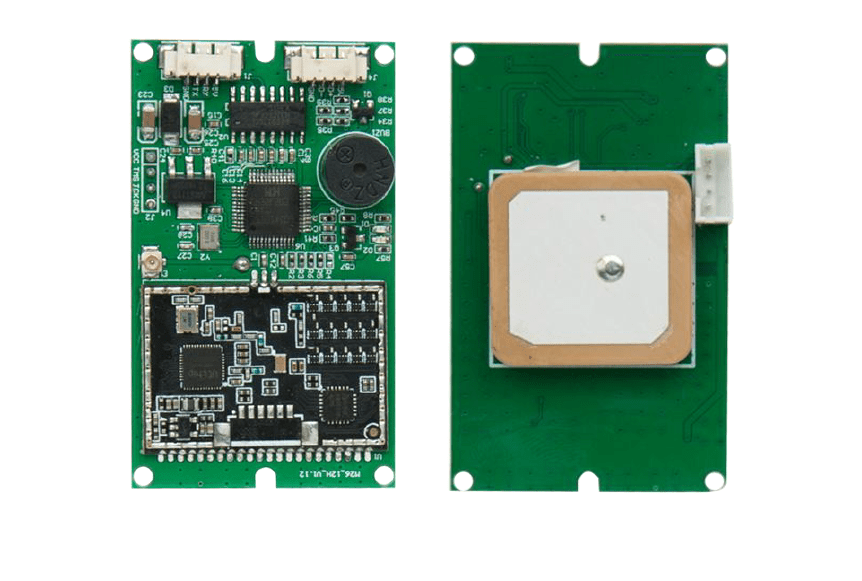In an era where seamless connectivity and automation are transforming industries, Radio-Frequency Identification (RFID) technology has quietly emerged as a backbone of modern innovation. From retail checkouts to hospital patient tracking, RFID modules are revolutionizing how we interact with objects and data. Let’s explore how this unassuming technology works and its surprising applications across sectors.
What is RFID?
RFID is a wireless communication technology that uses electromagnetic fields to identify and track tags attached to objects. An RFID system typically consists of three components:
RFID Tags: Tiny microchips with antennas, storing data like unique IDs.
RFID Readers: Devices that transmit signals to activate tags and read/write data.
Antennas: Facilitate communication between tags and readers.
Unlike barcodes, RFID doesn’t require line-of-sight scanning. A tag can be read from several meters away, even through materials like plastic or fabric.
How Does RFID Work?
Activation: The reader emits radio waves, powering passive tags (no battery required) or waking up active tags (battery-powered).
Data Transfer: The tag responds by transmitting its stored information back to the reader.
Processing: The reader forwards the data to a backend system for analysis or action.
RFID operates at different frequencies depending on use cases:
Low Frequency (LF): 125–134 kHz (e.g., pet microchipping).
High Frequency (HF): 13.56 MHz (e.g., contactless payments).
Ultra-High Frequency (UHF): 860–960 MHz (e.g., inventory tracking).
Applications Transforming Industries
1. Retail & Inventory Management
Smart Shelves: RFID-enabled shelves detect stock levels in real time, triggering automatic reorders. Brands like Zara use RFID to reduce stockouts by 50%.
Checkout-Free Stores: Amazon Go stores use RFID and sensors to let shoppers "grab and go," eliminating queues.
Anti-Counterfeiting: Luxury brands embed RFID tags in products to authenticate items and combat fakes.
2. Supply Chain & Logistics
Warehouse Automation: RFID tracks pallets and packages, cutting manual scanning time by 90%. DHL reported a 20% efficiency boost using RFID.
Cold Chain Monitoring: Pharma companies use temperature-sensitive RFID tags to ensure vaccine integrity during transport.
3. Healthcare
Patient Safety: Hospitals tag wristbands to match patients with medications, reducing errors by 80% (per Johns Hopkins studies).
Equipment Tracking: RFID locates critical devices like defibrillators, saving staff up to 1.5 hours daily in searches.
4. Transportation & Smart Cities
Electronic Toll Collection: Systems like E-ZPass use RFID for seamless highway toll payments.
Smart Bins: Cities deploy RFID-tagged waste containers to optimize garbage pickup routes.
5. Agriculture & Livestock
Animal Tracking: Farmers monitor livestock health and movement using ear tags.
Crop Management: RFID sensors track soil moisture and pesticide use for precision farming.
The Future of RFID
As RFID modules shrink in size and cost (some tags now cost under $0.10), their applications are exploding:
IoT Integration: RFID data feeds into IoT platforms for predictive analytics.
Smart Packaging: Food packages with RFID tags alert consumers about freshness.
Augmented Reality (AR): Museums use RFID to trigger AR displays when visitors approach exhibits.
Challenges & Considerations
While promising, RFID adoption faces hurdles:
Privacy Concerns: Unauthorized tracking risks require encryption solutions.
Metal/Liquid Interference: UHF RFID struggles near metals, but new tag designs are overcoming this.
Standardization: Global frequency regulations vary, complicating cross-border deployments.
Conclusion
RFID modules are the unsung heroes of our hyper-connected world, bridging the physical and digital realms. As industries embrace automation and data-driven decision-making, this decades-old technology continues to reinvent itself, proving that sometimes the most powerful innovations are the ones we don’t see. Next time you tap a transit card or breeze through a self-checkout, remember: there’s a tiny RFID tag working behind the scenes to make life smoother.
welcome for purchasing RFID modules from www.sicubeshop.com directly.


Share:
Is the TIR Prism Directly Corresponding to the DMD Chip Size?
Photoresistors: Light-Sensitive Components Explained
1 코멘트
8nzmla